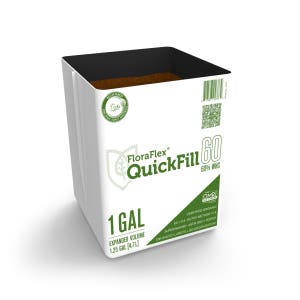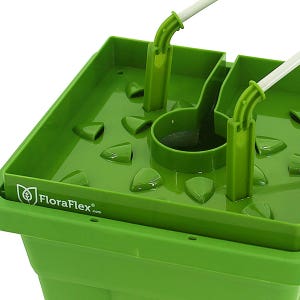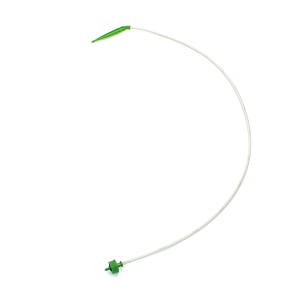Even after you harvest a successful crop of hydroponically grown fruits, vegetables, or herbs, your work continues as you prepare for the next growing cycle. You can’t jump into raising your next batch of crops before cleaning your hydroponic garden, or else they may face disease or an algae crisis and suffer.
Every hydroponic grower must know how to clean and sanitize their equipment to continue to grow healthy, happy plants. With our step-by-step guide to cleaning your hydroponic system, you’ll be able to get the cleaning out of the way and move on to a newly blossoming garden in no time at all.
Step 1: Clear the System of Any Other Plants
If you’ve lined your cleaning schedule up so that you can wash all your hydroponic equipment at the same time, then you can likely skip this step. However, because plants grow at different rates, you may have one hydroponic system that requires cleaning while other plants are still growing. If this is the case, you may want to take the dirty equipment to a different room to avoid chemicals splashing onto live plants or into their basins.
With a system that hosts multiple types of plants, relocate the healthy crops elsewhere so that you can get to work on cleaning the system. This might also happen if a few of your plants had a disease that required you to cull them before they infected the rest of your garden.
Step 2: Clean the Grow Room
Next, make sure the environment you’re working in is clean. If you’re cleaning all your equipment at once in your grow room, take this opportunity to deep clean the room and make it a healthier place for your garden to live. Mop the floors, scrub the walls, clean the growing tables, and install new air filters when necessary. Don’t leave any water or soap pooling on the floor—both for your own safety and to prevent pests or fungi from invading the room.
Make sure to dust off the areas you don’t often think about. Areas such as dirty grow lights can accumulate bacteria over time, especially if you don’t dust them.
Even if you’re not cleaning the equipment in the grow room, make sure that the room in which you’re cleaning the equipment is sterile. If you clean your equipment in a dirty environment, you’ll cancel out the sterility by inviting dust or bugs to settle on the equipment once you finish. Don’t clean hydroponic equipment outside, or you may contaminate it with pests and diseases.
Step 3: Drain the Remaining Liquid From the Hydroponic System
Now that your equipment is in a safe, sterile environment, begin by draining the basin of its contents—if you haven’t already. If you see a shallow layer of solution at the bottom of the basin or in any of the containers, be sure to remove it. You can either soak up the solution with a sponge or use a wet-and-dry vacuum to suck it up.
Step 3.5: Remove All Organic Material From the System
As you’re draining any remaining liquid, thoroughly inspect the hydroponic system for any leftover organic matter, including dead plant life, pests, or fungi. Remove as much as you can on your own before you start the cleaning process.
Step 4: Gather Your Cleaning Tools
Your hydroponic system is now ready for its cleaning. Before you begin, make sure to equip yourself with the following cleaning resources:
- Rubber gloves
- A face mask
- Sponges and scrubbers
- Bottle brushes
- Clean, dry cloths or rags
- Buckets
- Small plastic bins (for soaking small pieces)
- A water source
- Food-grade hydrogen peroxide (35 percent) OR vinegar (organic substitute)
Remember: Never mix chemicals. Always read the labels on any cleaning agent you use. You may substitute odorless bleach for hydrogen peroxide, but it requires heavier dilution to use as a cleaning agent and will also require you to triple-rinse anything you use it for.
Food-grade hydrogen peroxide is a higher concentration of solution than the type of hydrogen peroxide you would use to treat cuts—you must wear protective gloves while handling food-grade hydrogen peroxide.
Step 5: Separate and Soak Smaller Pieces
Take apart your hydroponic system, and put the smaller pieces, such as nozzles and air pumps, into a bath of food-grade hydrogen peroxide and water. For every gallon of water, add 3 m of hydrogen peroxide. Set these to the side as you get to work on your hydroponic system.
If you use a Rockwool growing medium in your hydroponic garden, don’t forget that you can reuse it by soaking it in a similar bath.
Step 6: Do an Initial Scrub of the Basin
Fill one of your empty buckets with the same type of solution you used in the diluted hydrogen peroxide bath: One gallon of water for every 3 ml of hydrogen peroxide. Dip your scrubber or sponge into the solution and scrub the basin from the top down. Don’t leave any nutrient salts or mineral residue behind on the sides of the basin. Use smaller brushes to scrub the individual containers if your system uses them.
At this point, you can also scrub your smaller hydroponic pieces and gently dry them with a cloth.
Step 7: Perform a Cleansing Cycle
Rinse out any minerals or debris that built up at the bottom of the basin after your initial scrub, then refill the basin fuller than you’d normally fill it with more of the hydrogen peroxide and water mixture that you’ve been using. Put your hydroponic system together, and allow it to run for several hours.
Step 8: Flush the Hydroponic System
After four to six hours pass, turn the system off, and drain the solution out. Fill the basin with fresh water, and run it again to flush out any remaining hydrogen peroxide mixture or minerals. Each full cycle you run, be sure to drain the basin and replace it with more fresh water to ensure the same solution isn’t running through the system over and over. Flush the system three times and then drain it a final time.
Step 9: Allow the System To Dry
You’re finally finished cleaning and have reached the end of this step-by-step guide to cleaning your hydroponic system! All you have to do now is dry every area you can with a clean cloth or towel and allow it to dry fully before you use it again. Avoid leaving pools of water inside the basin or any of the containers; bacteria could settle and cause a disaster for your plants. To accelerate the drying process and avoid standing water, bring in fans and turn on your grow lights.
Whether you’re starting out with the supplies in a hydroponic grow kit from FloraFlex or a homemade vertical garden, once it’s dry, you’re ready to start growing again. Make sure to clean your system after every grow cycle, even if you’re growing the same crop!






















